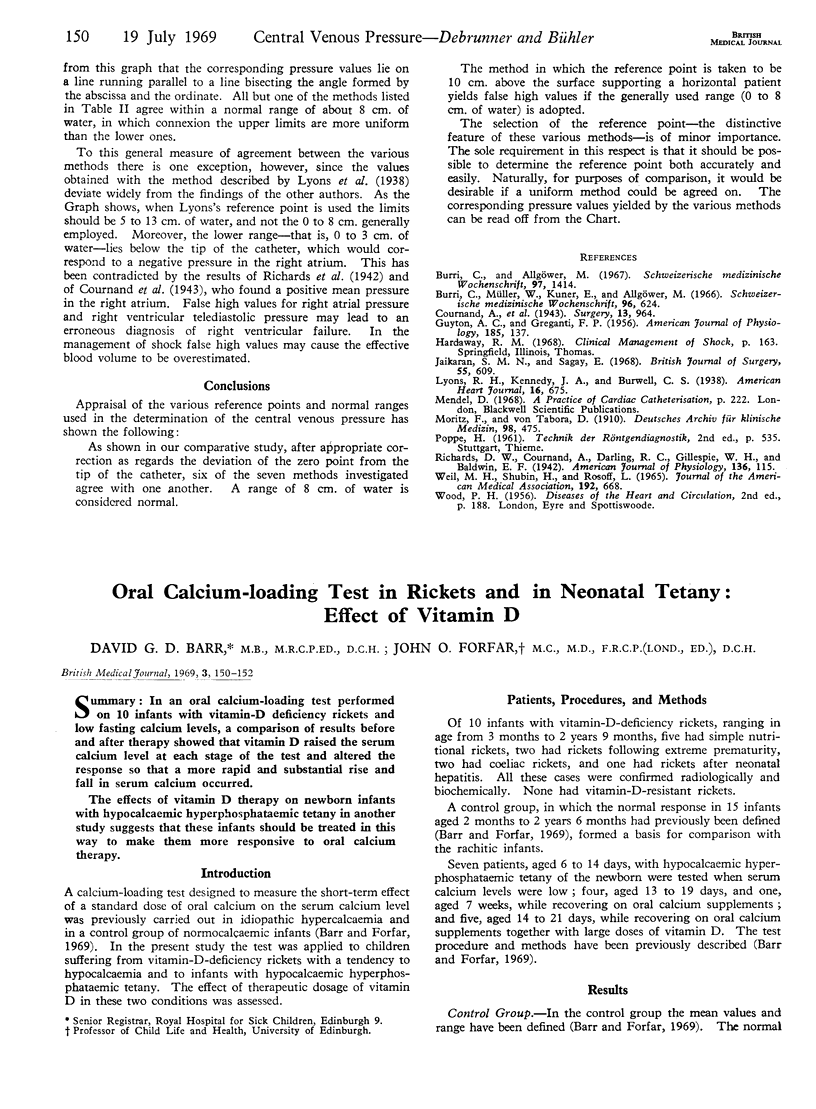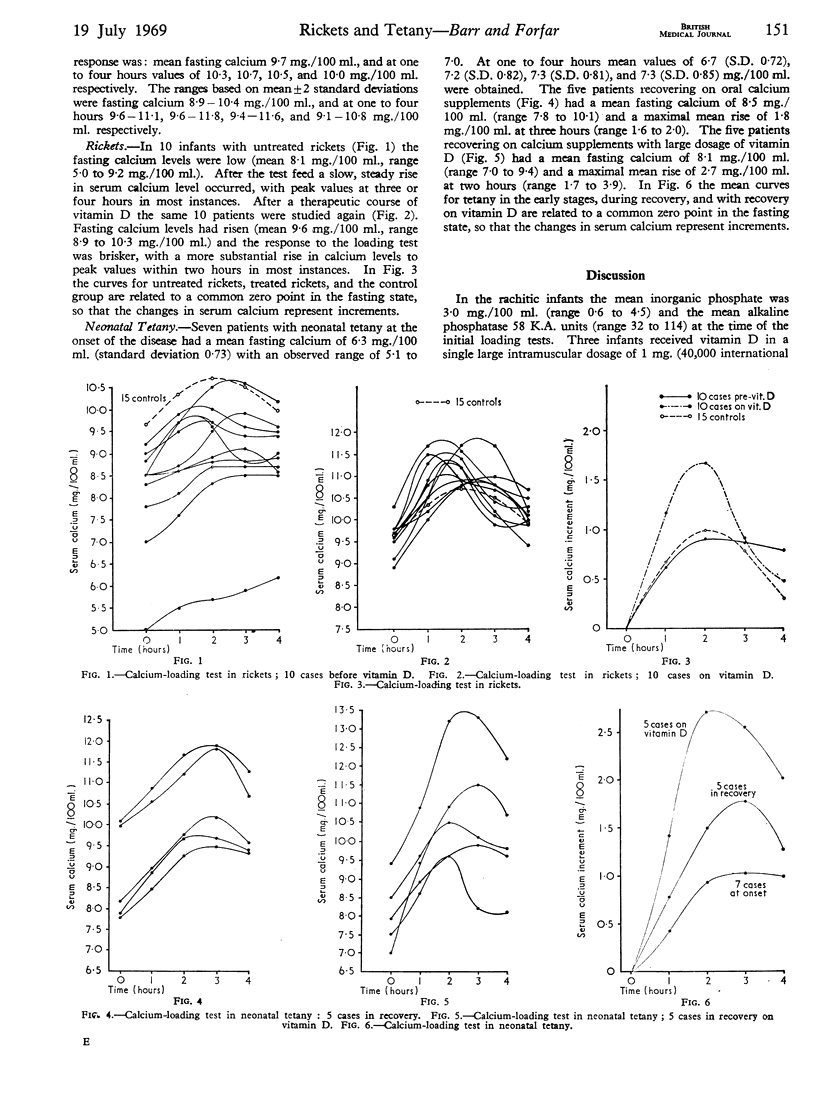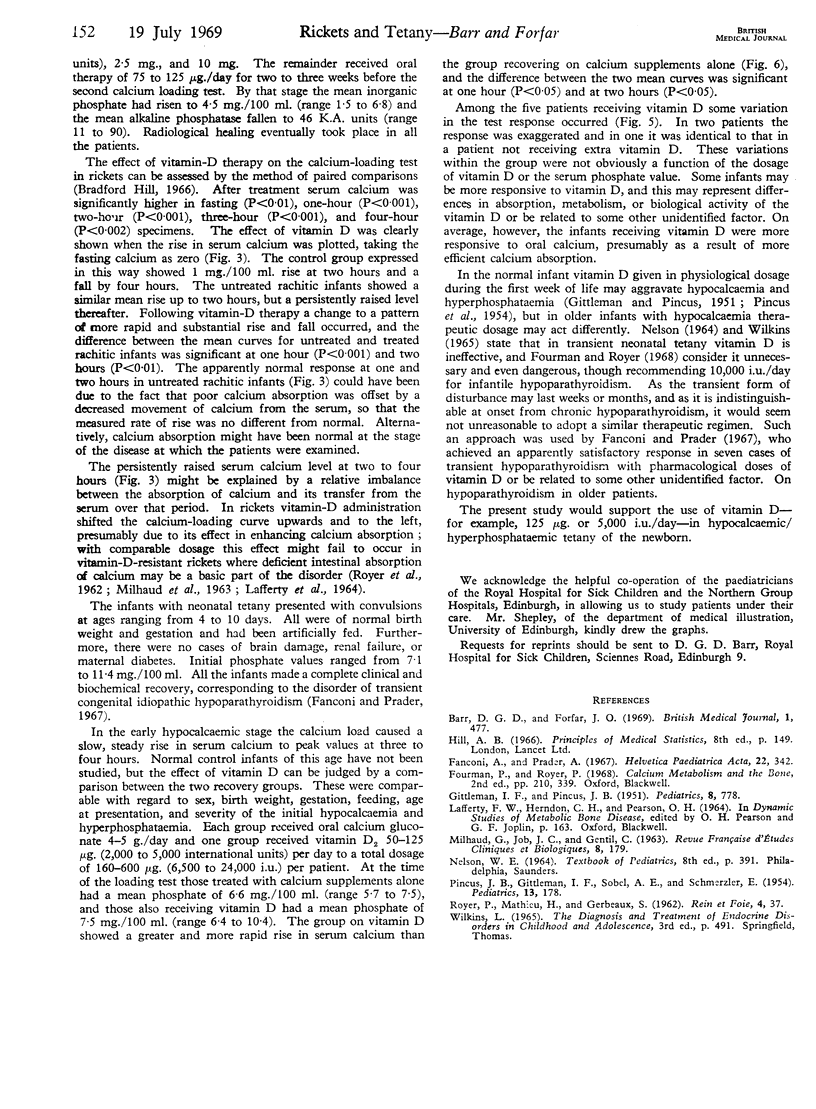Abstract
In an oral calcium-loading test performed on 10 infants with vitamin-D deficiency rickets and low fasting calcium levels, a comparison of results before and after therapy showed that vitamin D raised the serum calcium level at each stage of the test and altered the response so that a more rapid and substantial rise and fall in serum calcium occurred.
The effects of vitamin D therapy on newborn infants with hypocalcaemic hyperphosphataemic tetany in another study suggests that these infants should be treated in this way to make them more responsive to oral calcium therapy.
Full text
PDF


Selected References
These references are in PubMed. This may not be the complete list of references from this article.
- Barr D. G., Forfar J. O. Oral calcium-loading test in infancy, with particular reference to idiopathic hypercalcaemia. Br Med J. 1969 Feb 22;1(5642):477–480. doi: 10.1136/bmj.1.5642.477. [DOI] [PMC free article] [PubMed] [Google Scholar]
- Fanconi A., Prader A. Transient congenital idiopathic hypoparathyroidism. Helv Paediatr Acta. 1967 Aug;22(4):342–359. [PubMed] [Google Scholar]
- GITTLEMAN I. F., PINCUS J. B. Influence of diet on the occurrence of hyperphosphatemia and hypocalcemia in the newborn infant. Pediatrics. 1951 Dec;8(6):778–787. [PubMed] [Google Scholar]
- PINCUS J. B., GITTLEMAN J. F., SOBEL A. E., SCHMERZLER E. Effects of vitamin D on the serum calcium and phosphorus levels in infants during the first week of life. Pediatrics. 1954 Feb;13(2):178–185. [PubMed] [Google Scholar]
- ROYER P., MATHIEU H., CERBEAUX S. [Biological explorations of calcic metabolism in children]. Rein Foie. 1962 Jun;4:I/37–I/89. [PubMed] [Google Scholar]


